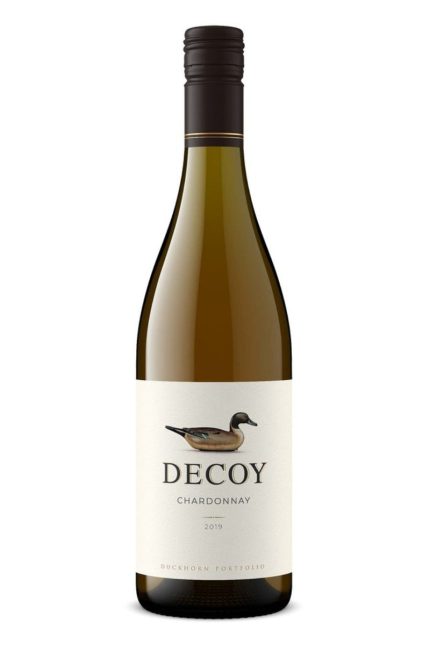Chardonnay is one of the world’s most popular and widely recognized white wines. Known for its versatility, this grape variety can produce a broad spectrum of styles, from crisp and mineral to rich and buttery. Whether grown in the cool regions of Burgundy or the warm climates of California, Chardonnay adapts beautifully to different terroirs, offering something for almost every palate. This article explores the characteristics, history, and key regions of Chardonnay wine, along with food pairing suggestions and tips on how to best enjoy it.
The Origins of Chardonnay
chardonnay wine‘s story begins in the Burgundy region of France, where it is believed to have originated. The grape itself is thought to be a natural cross between the Pinot Noir and the ancient Gouais Blanc grape varieties. The name “Chardonnay” likely comes from the village of Chardonnay in the Mâconnais, a subregion of Burgundy, although it is also possible that the name refers to the word “chardonnay,” meaning “thorny” in reference to the grape’s prickly nature.
While Chardonnay has roots in France, its popularity has since spread worldwide. Today, it is cultivated in numerous wine-growing regions, from the cool climes of New Zealand to the sun-drenched vineyards of Australia and California. Its versatility and ability to express the characteristics of its terroir—meaning the environment in which the grapes are grown—are among the reasons why it has become so beloved across the globe.
Characteristics of Chardonnay
Chardonnay is a relatively neutral grape variety, meaning it can take on a wide range of flavors depending on factors such as climate, soil, and winemaking techniques. However, there are some common characteristics that most Chardonnays share.
- Flavor Profile: At its core, Chardonnay often features notes of apple, pear, citrus, and stone fruits like peach and apricot. In cooler climates, the wine tends to have a more citrus-driven profile, while in warmer regions, it can be more fruit-forward and tropical, with flavors of pineapple, mango, or melon.
- Acidity: One of Chardonnay’s signature traits is its acidity, which ranges from bright and zesty in cooler regions to rounder and softer in warmer climates. This acidity is part of what makes Chardonnay such a versatile food pairing wine, as it can cut through rich dishes or complement lighter fare.
- Body and Texture: Chardonnay can be either light-bodied or full-bodied, depending on how it is vinified. In many cases, especially in regions like Burgundy or Napa Valley, Chardonnay has a fuller, creamier mouthfeel, often achieved through the use of oak barrels and malolactic fermentation (a secondary fermentation that softens the wine and adds buttery textures).
- Oak Influence: Chardonnay is often aged in oak barrels, which imparts additional flavors like vanilla, butter, toast, and spice. This oak aging can range from subtle to pronounced, depending on the winemaker’s style. Some Chardonnay is fermented and aged in stainless steel tanks, preserving a fresher, crisper style that emphasizes fruit flavors and acidity over oak-derived flavors.
- Minerality: Chardonnay grown in limestone-rich soils, especially in regions like Chablis (Burgundy) and some cooler California sites, can exhibit a distinct mineral character. This can include flinty, steely, or chalky notes that add complexity to the wine.
Key Chardonnay Regions
Chardonnay thrives in a range of climates, though it is most commonly associated with regions that provide a balance of warmth and coolness—warm enough to allow the grapes to ripen fully, but cool enough to preserve acidity.
- Burgundy (France): Burgundy is the birthplace of Chardonnay and remains one of the best places in the world to experience this grape in its many forms. The region’s two most famous Chardonnay-producing subregions are Chablis and the Côte de Beaune. Chablis, located in the northern part of Burgundy, produces lean, high-acid Chardonnays with mineral and citrus notes. The Côte de Beaune, including famous villages like Meursault, Puligny-Montrachet, and Chassagne-Montrachet, is known for producing richer, fuller-bodied Chardonnays with buttery textures and flavors of ripe fruit, nuts, and spice.
- California (USA): California is perhaps the most famous non-French region for Chardonnay. The state’s diverse climate allows for a wide range of Chardonnay styles, from the crisp, unoaked examples found in cooler regions like Sonoma Coast and Santa Barbara to the bold, oaky Chardonnays of Napa Valley. California’s warm weather provides ample sunshine, allowing the grapes to ripen fully and develop ripe fruit flavors. Napa Valley Chardonnays, for example, are often rich and buttery with hints of vanilla and caramel from oak aging.
- Australia: Australia has gained a reputation for producing high-quality Chardonnay, particularly in cooler regions like Margaret River and Adelaide Hills. Australian Chardonnays tend to have a balance of ripe fruit flavors with bright acidity. The country’s winemakers also focus on crafting a more restrained, elegant style of Chardonnay, which has made Australian Chardonnays increasingly popular among international wine drinkers.
- New Zealand: New Zealand, particularly the Marlborough region, is gaining recognition for its fresh, vibrant chardonnay wine. The cooler climate here allows the wines to maintain crisp acidity while still showcasing ripe fruit flavors, such as citrus and stone fruits. New Zealand Chardonnays often exhibit a leaner, more minerally profile compared to their Australian counterparts.
- South Africa: South Africa has also emerged as an important player in the world of Chardonnay. The country’s cooler coastal regions like Constantia and Walker Bay produce wines with a lovely balance of fruit, acidity, and minerality. South African Chardonnays can range from elegant and fresh to richer, oak-influenced styles.
Winemaking Techniques for Chardonnay
The approach to making Chardonnay can vary greatly depending on the style the winemaker wants to achieve. Some key techniques that influence the final wine include:
- Malolactic Fermentation: This secondary fermentation process converts malic acid (which gives the wine a tart, green apple flavor) into lactic acid (which gives the wine a creamier, softer texture). This process is often used in the production of richer, buttery Chardonnays, especially those that undergo oak aging.
- Oak Aging: Oak barrels, particularly those made from French oak, are often used to age Chardonnay. Oak can impart flavors of vanilla, butter, toast, and spice, as well as soften the texture of the wine. The amount of time the wine spends in oak can vary—some winemakers opt for just a short period of barrel aging, while others may leave the wine in oak for months or even years.
- Lees Stirring: To create a richer texture and complexity, some Chardonnay wines are aged on their lees (the dead yeast cells left over from fermentation). Regular stirring of the lees, a technique known as bâtonnage, can enhance the wine’s body and add nutty, yeasty flavors.
Food Pairing with Chardonnay
Chardonnay is incredibly versatile when it comes to food pairings. Depending on the style—whether crisp and refreshing or rich and buttery—Chardonnay can complement a wide range of dishes.
- Oaked Chardonnay: A full-bodied, oak-aged Chardonnay pairs beautifully with rich, creamy dishes like lobster with butter, creamy pasta dishes, and roasted chicken. The wine’s buttery texture complements the richness of these dishes, while its acidity cuts through the creaminess to cleanse the palate.
- Unoaked Chardonnay: A crisp, unoaked Chardonnay works well with lighter fare, such as seafood, sushi, chicken salads, and vegetable dishes. The bright acidity of the wine helps balance the freshness of the food and provides a clean, refreshing finish.
- Cheese Pairings: Chardonnay pairs wonderfully with a variety of cheeses. Rich, creamy cheeses like Brie, Camembert, and triple-cream cheeses complement the buttery texture of oak-aged Chardonnays, while crisper Chardonnays work well with sharper cheeses like goat cheese or aged Gruyère.
Conclusion
Chardonnay is a wine that can be both simple and complex, depending on how it is made and where it is grown. Its ability to reflect the character of its terroir, combined with its wide range of styles, makes it one of the most versatile and beloved wines in the world. Whether you prefer the crisp, mineral-driven wines of Chablis or the rich, buttery Chardonnays of Napa Valley, there’s a Chardonnay out there to suit every taste. Its flexibility in pairing with food, combined with its broad appeal, ensures that Chardonnay will remain a staple on wine lists and dinner tables for years to come.



